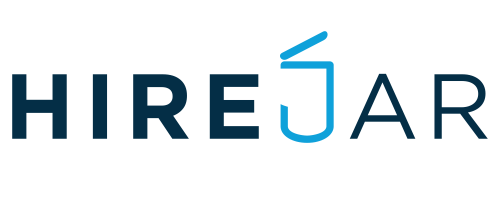In the workplace, the desire among employees for personal growth and new experiences is more pronounced than ever. This often translates into a keen interest in internal transfers, allowing employees to explore diverse roles within the same organization. However, businesses frequently find themselves in a predicament when these aspirations collide with the indispensability of employees’ current roles. This impasse can lead to decreased employee satisfaction and, ultimately, turnover, creating a no-win situation for both the employees and the business.
Yet, there exists a strategic solution that not only facilitates internal transfers but also ensures business continuity: the temporary incorporation of consultants to cover the transitioning employees’ roles.
Claim your Free Subscription to HireJar, the AI Hiring Platform to Fill Any Role, Any Duration
Understanding the Challenge
The challenge arises when employees, integral to their current positions, seek internal transfers for professional development. These roles, often critical to the company’s operations, cannot be left vacant without risking operational disruptions. Consequently, businesses may hesitate to approve internal transfers, fearing the potential negative impact on their operations. This hesitation can significantly affect employee morale and retention, as the lack of growth opportunities may drive them to seek new challenges elsewhere.
The Strategic Solution: Temporary Consultants
The innovative solution to this conundrum lies in hiring consultants to temporarily fill the roles left by employees who move internally. This approach has several compelling advantages:
- Ensures Business Continuity: By bringing in experienced consultants, businesses can maintain uninterrupted operations, ensuring that critical functions remain operational while employees explore new roles.
- Boosts Employee Satisfaction and Retention: Employees are more likely to stay with a company that supports their growth aspirations. By facilitating internal transfers, businesses can significantly enhance job satisfaction and loyalty.
- Gradual Transition for Permanent Replacement: This strategy allows the business to take its time to find the right candidate for the permanent position, ensuring a better fit for the role and the company culture.
- Potential Permanent Role for Consultants: The consultants, having already proven their capabilities and fit within the company, may be considered for the permanent position. This offers a seamless transition should they be chosen to stay on.
Implementation Tactics
To effectively implement this strategy, businesses should:
- Identify Transferable Roles: Not all positions are suitable for this approach. It’s crucial to identify which roles are critical yet can be temporarily covered by consultants without affecting business operations.
- Develop a Consultant Onboarding Process: The transitioning employee can play a pivotal role in hiring and training the consultant. This involvement ensures a smooth handover and operational continuity.
- Create a Clear Transition and Backfilling Plan: Outline the steps for the internal transfer, the temporary coverage by the consultant, and the timeline for hiring a permanent replacement. This plan should include the consultant’s potential transition out of the role if they are not selected for the permanent position.
- Evaluate and Adjust: Continuously assess the effectiveness of this approach in facilitating internal transfers and maintaining operational stability. Gather feedback from employees, consultants, and managers to refine the process.
The Win-Win Outcome
Employing consultants to temporarily cover roles enables employees to pursue internal transfers without jeopardizing the company’s operational integrity. This strategy not only addresses the employees’ desires for growth and new challenges but also ensures that the business does not miss a beat during transitions. Moreover, the process of backfilling provides ample time to find the perfect candidate for the role, enhancing the long-term stability and performance of the team.
Conclusion
The temporary use of consultants as a bridge for internal transfers represents a forward-thinking approach to employee development and business growth. It addresses the dual challenge of maintaining operational efficiency while fostering a culture of growth and satisfaction among employees. By adopting this strategy, businesses can turn potential obstacles into opportunities for development, retention, and long-term success, ensuring a committed and motivated workforce.

